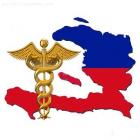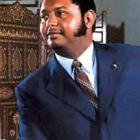ADVERTISEMENT
History
Fort Picolet built to protect Cap-Haitian
Fort Picolet, like most other forts build to protect the settlements behind it, was the result of the importance of Cap Haitien to the French during their rule over Haiti. The one time capital of Haiti needed dependable fortification, so the fort was built on the side of a mountain accessible by a nearby beach. Beside the fort is a river for fresh water and the nearby harbor provided further accessibility. The fort fell into ruin after the series of revolts that liberated Haiti from French rule.
Fort Picolet with secret tunnels
Construction on Fort Picolet began in 1736 by Mr. Larnage, but was not finished until 1741, under the guidance of Mr. Du Coudrean Engineer. The colonial fort was completed with secret tunnels, fierce battlements, winding, steep staircases and a lighthouse. Built for the defense of the French Cape, Fort Picolet was one of forty which were constructed in Haiti's north coast. It had two batteries a path for walking and a coastal wall. Its first commander was Henry Christophe.
Union Club, a social club in Cap Haitien - 1907
Here is a picture of Union Club which was a social club in Cap Haitian on the beginning of 1900s
The 1800's were the golden age for Cap Haitian, then called Le Cap, or, The Cape. The town was legendary in the French Empire and was viewed as the richest colony under the French cap. The wealth of the city had much to do with the one hundred thousand coffee trees being harvested there. The Cap Haitian of the present, by comparison, is a struggling, over-populated city. Luckily untouched by the 2010 earthquake, the city has a chance to retain some of its former glory through tourism and its ready-made appeal to the industry.
The Battle of Vertieres in the Haitian Revolution
The Battle of Vertières, the last major battle before Haitian Independence. Fought between Haitian rebels and French expeditionary forces on 18 November 1803 at Vertières situated Nord of Haiti. Haitian rebels had already taken over all the territory from France. The only places left to France were Mole St. Nicolas, held by Noailles, and Cap-Français, by Rochambeau
The Cap-Haitian fires in 1793 and 1802, during the Haitian Revolution
Cap-Haitian was burned twice during the Haitian Revolution: in 1793 and 1802 or 1803. Henri Christophe ordered the city of Cap-Haitian to be burned down to prevent it falling into French hands.
Le Cap would arise later from the flames not as Cap Francais, but as a black ruled, black dominated city called Cap Haitien.
New Year Independence Day - Soup Joumou or Pumpkin Soup
This is a presentation of a typical independence Day in Haiti where we all Haitians will drink the Independence Soup Joumou.
This is a uniquely Haitian tradition dated back to our history during the French colonization of Saint Domingue.
Many brave and zealous Haitians died by fighting for the independence of Haiti hoping that one day they would be free.
When the French were in control, they were the only people who could eat soup because they were in the upper class. Blacks weren't allowed.
Charlemagne Peralte death
Here is a picture of the the place where the remains of the Haitian Caco leader has been buried. He was assassinated by the U.S Marines during the US Occupation
A state funeral was held for Charlemagne Peralte after the US occupation has terminated in Cap-Haïtien, where his grave can still be seen today.
Charlemagne Peralte remains
Here is the Place where Charlemagne Péralte remains have been rested since the end of the US occupation in 1935. Although he couldn't receive a proper funeral during the occupation, a national funeral was accorded to him later.
The official funeral of the Haitian hero, the leader of the Caco rebel fighter, Charlemagne Péralte, was held in Cap-Haitian and attended by the President of Haiti, Sténio Vincent
Charlemagne Peralte betrayed by Jean-Baptiste Conze
Here is a picture of Jean-Baptiste Conze, the Haitian rebel fighter who betrayed Charlemagne Peralte.
By that time, Charlemagne Péralte had already declared a provisional government in the north of Haiti.
Charlemagne Péralte was betrayed by one of his Caco fighters, Jean-Baptiste Conzé. This opportunist, led US Marines Sergeant Herman H. Hanneken and Corporal William Button into the Caco rebels camp which was located at the time near Grand-Rivière Du Nord
A name that has became famous in Haiti in its own right, Jean-Baptiste Conzé "Conzé"
Letter from Charlemagne Peralte to Gendarmerie in Maissade
This is a copy of the actual letter from Charlemagne Peralte addressed to Gendarmerie in Maissade.
This letter dated August 14th, 1919 said:
Charlemagne Peralte, Supreme chief of the Haitian revolution
I take the opportunity to write you this letter because I know that I am dealing with these Haitians, sons of the counry of Petion, Dessalines
Today, the revolution counts 11 Months It is not question that you don't support it your country for the triumph of the revolution
You are Black my brothers, I love you all...

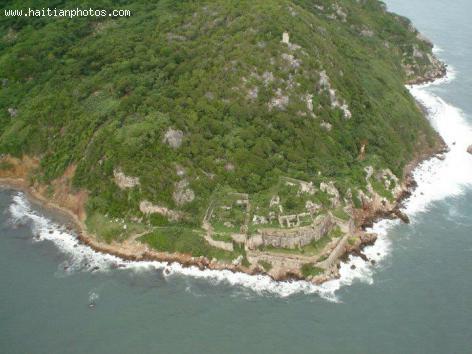
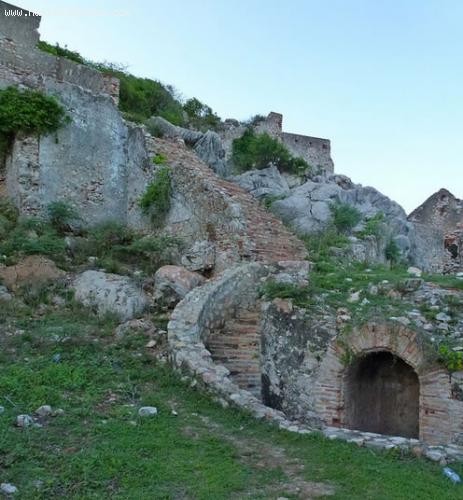
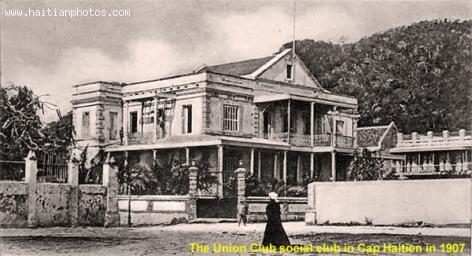
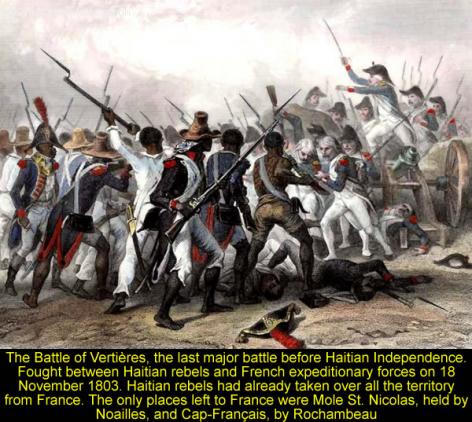
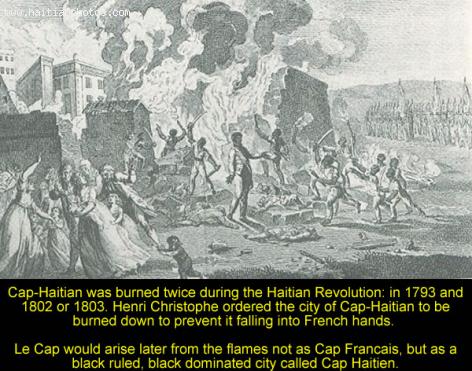

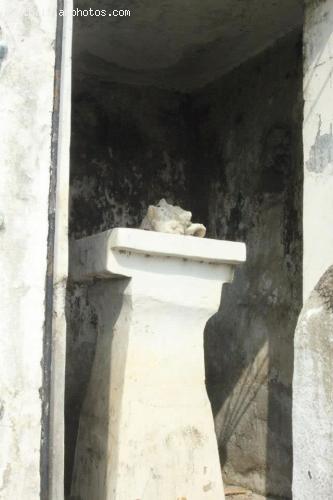
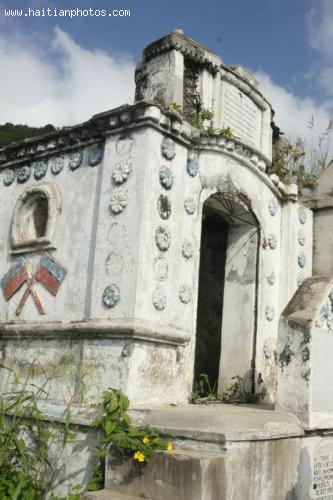
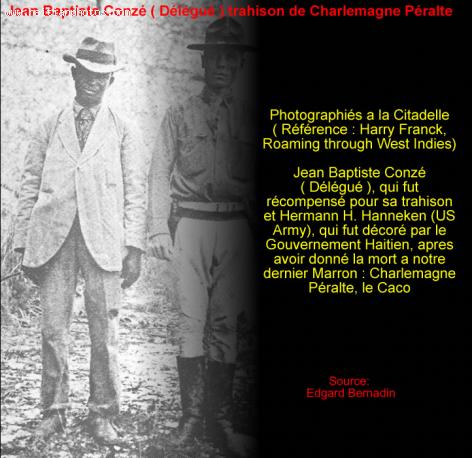
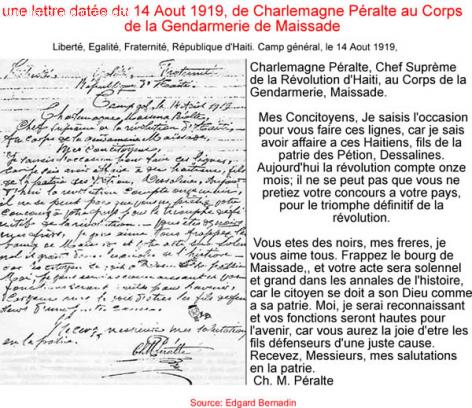
 François Nicolas Duvalier Potential Candidate for President of...
François Nicolas Duvalier Potential Candidate for President of... 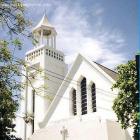 Nouveau College Bird in Port-au-Prince, Haiti
Nouveau College Bird in Port-au-Prince, Haiti  Jounalis Phares Duverne mouri
Jounalis Phares Duverne mouri  Pope Francis appointed Mgr. Launay Saturne Archbishop of...
Pope Francis appointed Mgr. Launay Saturne Archbishop of...  Jean Henry Céant deposited documents in Parliament for...
Jean Henry Céant deposited documents in Parliament for... 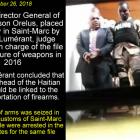 Former PNH Chief, Godson Orelus, arrested for illegal arm...
Former PNH Chief, Godson Orelus, arrested for illegal arm... 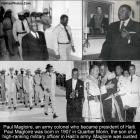 Paul Eugène Magloire, born in Quartier Morin
Paul Eugène Magloire, born in Quartier Morin  Commissioner Frantz Pierre indicted for accepting bribes
Commissioner Frantz Pierre indicted for accepting bribes 


